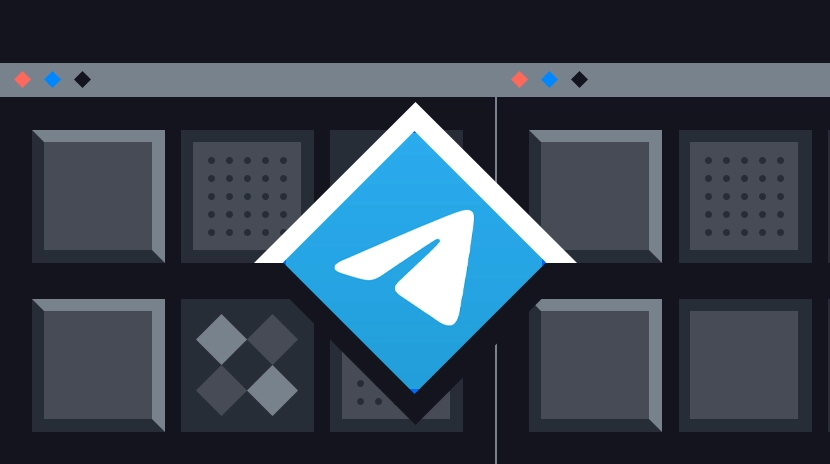ما هي شبكة Orochi؟ كل ما تحتاج إلى معرفته حول ON
شبكة Orochi هي بروتوكول يستخدم دليل الصفر وتقنيات التشفير لإنشاء حلول تسهل بنية بيانات قابلة للتحقق، مما يضمن سلامة البيانات من خلال الخصوصية والسرية.مقدمة
تلعب البيانات دورًا مهمًا في جميع العمليات الحسابية، ولا سيما في عصر الويب3 الناشئ. يصبح تعزيز إمكانية الوصول إلى البيانات ودقتها أمرًا ضروريًا لإجراء انتقال ناجح من الويب2 إلى الويب3. ومع ذلك، تعوق هذا الانتقال ديناميات مثل ملكية البيانات، والتحكم فيها، والتشغيل المتوافق، والأمان، والخصوصية، مما يترك فجوة بين النظم البيئية الحرجة.
في Web3، تعتمد سلامة البيانات عادةً على الشبكات الموزعة للتحقق. العديد من الحلول الحالية لا تزال تتطلب الثقة في معرفات الطرف الثالث، وهذا القيد الكامن في منصات العقود الذكية يثير تحديات في توفر البيانات والأمان. أدى هذا إلى إنشاء شبكة Orochi، أول بنية بيانات قابلة للتحقق في العالم التي تستفيد من خط أنابيب البيانات القابلة للتحقق و ZK-data rollup لإنشاء مجموعة من الحلول التي تعزز سلامة البيانات والسرية.
ما هي شبكة Orochi؟

المصدر: شبكة Orochi
شبكة Orochi هي سلسلة كتلية من الطبقة 1 (L1) وبنية بيانات قابلة للتحقق (VDI) توفر منصات سرية وقابلة للتطوير وسهلة الاستخدام لإدارة البيانات بشكل آمن ونقلها عبر تطبيقات مختلفة.
تستفيد من دلائل على الصفر (ZKPs)، وتشفير متكامل تمامًا (FHE)، وبيئات التنفيذ الموثوقة (TEEs) لتسهيل سلامة البيانات وسرية البيانات. تُمكن هذه التقنيات من الحوسبة القابلة للإثبات على البيانات المشفرة دون الكشف عن المعلومات الحساسة مع الحفاظ على أمان سير العمل.
الفريق

مصدر: تصنيف العملات الرقمية
يتكون فريق إدارة شبكة Orochi من متخصصين في مجالات البلوكشين والتشفير، كل منهم لديه خبرة عميقة في مجالاته المعنية. يتزعم الفريق تشيرو هيرو، مؤسس والرئيس التنفيذي، الذي يشغل أيضًا منصب رئيس تكنولوجيا المعلومات الحالي. إنه يجلب أكثر من 16 عامًا من الخبرة في الصناعة إلى المشروع.
تتضمن أعضاء الفريق الآخرين ماري تران، المؤسس المشارك ومدير النمو؛ كلوي فيام، مدير التسويق؛ كلير دانج، رئيس تطوير الأعمال؛ خوانغ نغوين-أن، عالم الحوسبة؛ وهاري تران، رئيس مديري الماليات.
ميزات فريدة من شبكة Orochi
توفر شبكة Orochi ميزات مبتكرة مصممة لمعالجة تحديات توافر البيانات في Web3.
التعاون مفتوح المصدر
شبكة Orochi تعتبر من بين القليل من المشاريع التي تدعم التعاون والمشاركة المجتمعية من خلال القنوات الموثوقة. يمكن للمطورين مراجعة مستودع البرنامج واقتراح تعديلات على صفحتهم على GitHub، بينما يمكن لأولئك الذين ليس لديهم خبرة في البرمجة التواصل مع فريق التطوير لتسجيل ملاحظاتهم.
الهندسة المعمارية النمطية
تعتمد نظام أوروتشي الإيكولوجي على هندسة معمارية قابلة للتوسيع توفر جميع الخدمات اللازمة، مما يقضي على الحاجة إلى تطبيقات الطرف الثالث. وهذا يسهم في أدائه العالي وعدم وجود تأخير.
خط أنابيب البيانات القابل للتحقق
باستخدام ZKPs والأدوات الكريبتوغرافية، تركز شبكة Orochi على تقديم بيانات قابلة للإثبات بطريقة آمنة ومحمية من التلاعب.
حالات استخدام شبكة Orochi

المصدر: شبكة Orochi
شبكة Orochi توفر البيانات بشكل آمن باستخدام البراهين بدون معرفة، مما يتيح أنابيب بيانات قابلة للتحقق قوية لحلول سلسلة الكتل.
على سبيل المثال، يمكن تطبيق شبكة Orochi على ألعاب Web3، التمويل اللامركزي (DeFi)، شبكة البنية البدنية اللامركزية (DePIN)، إنترنت الأشياء (IoT)، نماذج الذكاء الاصطناعي/التعلم الآلي (AI/ML)، أصول العالم الحقيقي (RWA)، تطبيقات المعرفة الصفرية (zkApps)، وتطبيقات اللامركزية (dApps) لتسهيل الوصول الآمن للبيانات.
الميزات الرئيسية لشبكة Orochi
لتحقيق خط أنابيب بيانات يمكن التحقق منه، قام شبكة Orochi ببناء أطر جاهزة للاستخدام تساعد على جلب بيانات آمنة وقابلة للإثبات إلى منصات Web3. معظم هذه الحلول متميزة وتتطلب من المستخدمين دفع تكلفة الوصول إليها. تم تصميمها في المقام الأول للمطورين لدمجها وتنفيذها ضمن العقود الذكية.
قاعدة بيانات zk
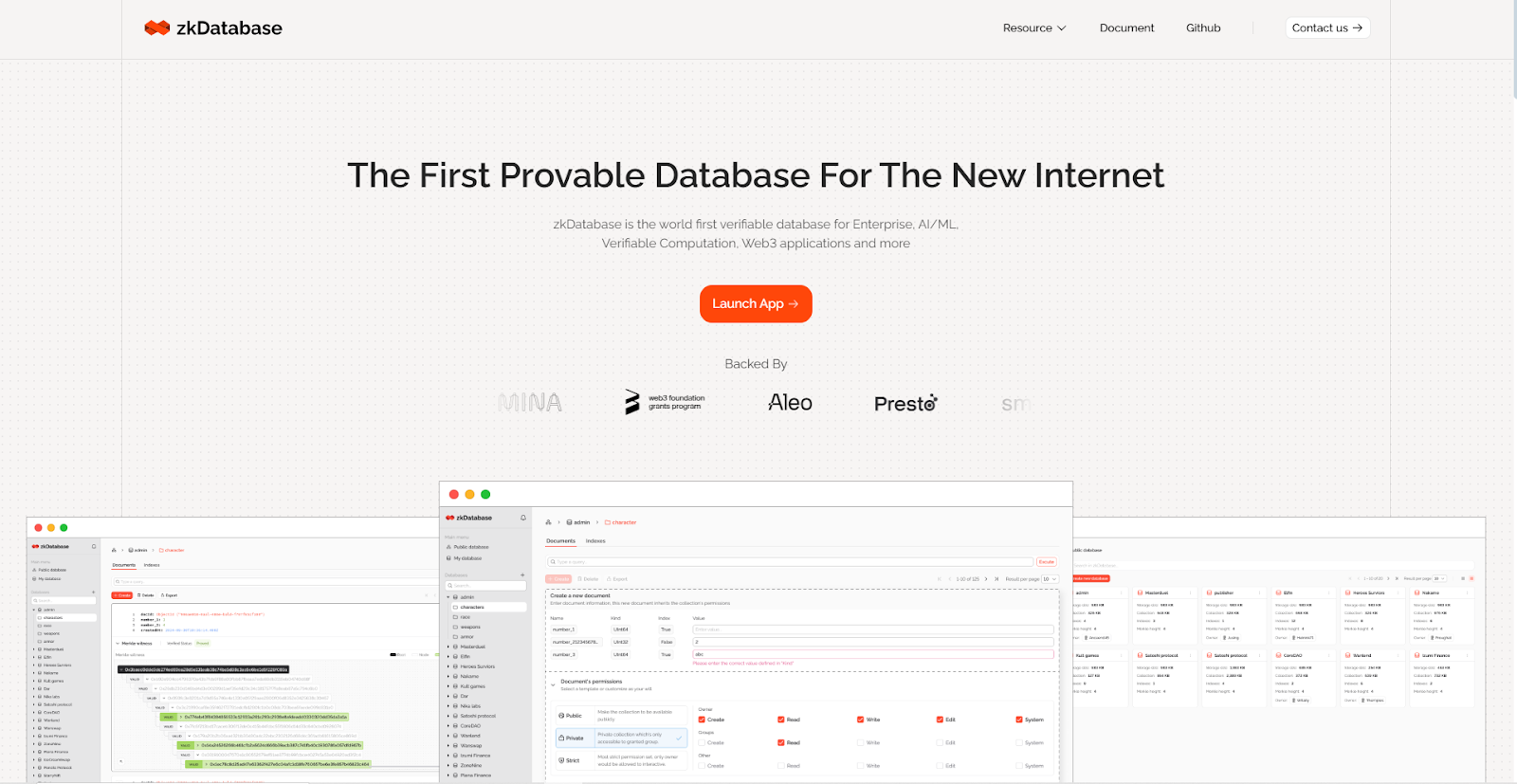
المصدر: قاعدة بيانات zk - شبكة Orochi
zkDatabase هو حلا يستفيد من هندسة قاعدة بيانات NoSQL ووحدات تشفير متخصصة لضمان خصوصية البيانات وأمانها.
تستخدم الوحدات التشفيرية أدلة الصفر المعرفية (ZKPs) لمصادقة استعلامات البيانات والتحقق من المعاملات دون الكشف عن البيانات الأساسية المعنية.
ذاكرة zk

Source: zkMemory - شبكة Orochi
zkMemory هو وحدة ديناميكية تم تطويرها لتمكين المطورين من إنشاء آلات افتراضية متعددة الاستخدامات وقابلة للتخصيص بدرجة كبيرة (zkVMs). إنه يعمل كدليل ذاكرة عالمي، ويوفر البنية التحتية الأساسية، مثل تخطيطات الآلة الافتراضية المرنة وأحجام الكلمات القابلة للتخصيص لتوليد دلائل توافق الذاكرة - وهو مكون حاسم لبناء آلات افتراضية متعددة الاستخدامات آمنة وفعالة وقابلة للتحقق.
Orocle

المصدر: شبكة Orocle - Orochi
أوروكل هو إصدار من مدخل مُوَزَّع يضمن توافق البيانات بين العقود الذكية والبيانات الواقعية عن طريق جلب البيانات خارج السلسلة والتحقق منها بحيث يمكن استخدامها على السلاسل البلوكية.
Orand

Source: Orand - شبكة أوروشي
Orand هو مولد عدد عشوائي متمركز يستفيد من القدرات التشفيرية لوظائف العدد العشوائي القابلة للتحقق من المنحنى البيضاوي (ECVRF) لإنشاء عشوائية آمنة وقابلة للتحقق. من خلال دمج ECVRF، يمكن لـ Orand تمكين العقود الذكية من توليد مخرجات غير قابلة للتلاعب ومحمية ضد التلاعب يمكن التحقق منها بشكل مستقل على السلسلة وخارجها.
أوراند تمكن أيضًا من تقديم دليل مرن، حيث يمكن للمستخدمين إدارة العملية سواء من خلال طلبها من الخلفية الخاصة بهم وتقديمها إلى العقد الذكي الخاص بهم، أو تفويضها للتقديم التلقائي من خلال تحويل الرموز إلى المشغلين.
ONACTIVE

المصدر: تنبيه انخفاض الهبوط
ONACTIVE هو تحدي التحقق في الوقت الحقيقي الذي صممته شبكة Orochi لمكافأة المشاركين عن جهدهم في بنية بيانات قابلة للتحقق للشبكة. يتيح للمستخدمين التحقق من البيانات لـ zkDatabase من خلال واجهة متصفح الويب، مما يضمن طبقة بيانات آمنة وقابلة للتوسيع ولامركزية.
يتنافس المشاركون في هذا البروتوكول للتحقق من الرموز التي تم إصدارها بفواصل زمنية للحصول على موقع في لوحة المتصدرين وكسب المكافآت في رموز ON.
كيفية المشاركة في التحقق من ONACTIVE
هنا دليل تدريجي حول كيفية المشاركة في عملية التحقق من ONACTIVE:
a) سجل في ONACTIVE عبر الموقع الرسمي. يمكن الاشتراك عن طريق GitHub أو Gmail أو عناوين البريد الإلكتروني.

المصدر: ONACTIVE
b) احذر من الرموز على القناة “RETROACTIVE” على قناة الدردشة في شبكة Orochi وانسخها.

المصدر:شبكة Orochi - Discord
c) لصق الرموز المنسوخة في الحقل المخصص على ملف ONACTIVE الخاص بك وانقر فوق زر 'التحقق من الرمز' للمتابعة.
ملاحظة: لضمان نجاح هذه العملية، يجب تنفيذها بسرعة وقبل الآخرين.

المصدر:ONACTIVE
محفظة Orosign

المصدر: مدونة أوروشي - أوروسينج
محفظة Orosign هي محفظة متعددة التوقيعات على الهاتف المحمول تم تطويرها من قبل شبكة Orochi، مصممة لإدارة الأصول الرقمية بشكل آمن. أحد ميزات هذه المحفظة المميزة هو أنها تتطلب توقيعات متعددة، أي مفاتيح خاصة متعددة لتفويض المعاملات، ويتم تأمين عملية التوقيع عن طريق استخدام التوقيع والتحقق خارج السلسلة.
طبقة zkDA

المصدر: شبكة أوروتشي
شبكة Orochi's طبقة zkDA (التوافر البيانات بدون معرفة) هي حلاً فريدًا لتحقيق توازن بين توافر البيانات وقابلية التشغيل المتقاطع والخصوصية. من خلال جمع ZKPs مع خط أنابيب بيانات قوي وبنية مرنة، يعالج مشاكل التوسع الأفقي في إدارة بيانات سلسلة الكتل.
تتكون هذه الطبقة من البنية التحتية مثل أنظمة إثبات المعرفة، التي تقدم بيانات يمكن التحقق منها على السلسلة، ومجموعات بيانات zk-rollups، التي تضغط مجموعات بيانات كبيرة إلى دلائل موجزة. كما تم تصميمها بآلية توافقية لتحسين الإنتاجية ونهج لا يعتمد على نظام الإثبات لتبسيط الاعتماد عبر سلاسل كتل متنوعة.
كيف تعمل شبكة Orochi؟
حلول شبكة Orochi مصممة لتكون قابلة للتشغيل المتبادل. على سبيل المثال، يسترجع Orocle البيانات خارج السلسلة، التي يمكن تخزينها في zkDatabase، ومعالجتها في zkMemory، واستخدامها مع العشوائية التحقق المقدمة من Orand. تحدث جميع هذه العمليات داخل الإطار الكريبتوغرافي الآمن لـ Orochi.

المصدر: شبكة Orochi
ومع ذلك، قد يُطلب من المطورين شراء اشتراك لاستخدام هذه الخدمات وفتح إمكانيات شبكة Orochi الذكية للعقود وتطبيقات الهاتف الذكية (المتاحة للمستخدمين المميزين).
يمكن للمستخدمين الذين يمتلكون شركات تجارية استخدام محفظة Orosign لإدارة أصولهم بأمان، ويمكنهم أيضًا استخدام ONACTIVE للمساهمة في نظام الأوروشي البيئي وكسب المكافآت.
شبكة اوروتشي المعمارية

المصدر: مستندات شبكة Orochi
يعمل شبكة Orochi بواسطة بنية تحتية مشفرة بواسطة بلوكتشين قليلة، مما يساعدها على تقديم حلول بيانات سرية وقابلة للتحقق في بيئات لامركزية.
خط أنابيب البيانات التحقق منه
خطوط أنابيب البيانات التي يمكن التحقق منها تضمن أن كل خطوة من معالجة البيانات - من أخذ العينات والمعالجة والبحث والتحول - تتم التحقق منها بشكل تشفيري لضمان الشفافية والثقة للعقود الذكية.
أخذ العينات القابل للتحقق
يبدأ عملية التحقق من خلال إثبات أصالة عينات البيانات من نقطة النهاية مثل واجهة برمجة التطبيقات أو قاعدة بيانات موثوقة. يقوم الدليل بإنشاء دليل لتأكيد سلامة العينة وفقًا لخوارزمية عينة.
Verifiable Processing
بعد التحقق بنجاح من عملية العينة، يتم الانتقال إلى إثبات أن البيانات المحصلة قد تم تحويلها بدقة إلى بيانات منظمة وفقًا لمجموعة الخوارزميات المحددة مسبقًا لهذا الغرض.
البحث بروفر
في هذه المرحلة، يتم التحقق من نقطة البيانات المبحثة (القيمة المفتاحية) وتشغيلها من خلال مجموعة بيانات آمنة ومنظمة (شجرة B)، مما يؤكد أنها جزء من مجموعة أكبر وموثوقة. ينشئ هذا دليلاً موجزًا وقابلاً للتحقق على أن كل من البحث وإدراج البيانات دقيقان.
برهان التحول
هذه المرحلة تضمن التعديلات على البيانات مثل الإدراج، الحذف وتغييرات التنسيق تتم التحقق منها لضمان الدقة مقابل هيكل بيانات محدد مسبقًا. إنها تنشئ دليلاً تشفيريًا مرتبطًا بنظام التعهد يعمل كبصمة بيانات لتأكيد صحة التعديلات.
تخزين موزع
يتضمن هذا المفهوم تعهد البيانات عبر شبكة من الحواسيب بدلاً من الاعتماد على الخوادم المركزية، التي تميل إلى المساس بالخصوصية وأمان البيانات المخزنة.
الرسم البياني الموجه الدوري لميركل
هذه نظام يضمن تخزين البيانات بشكل آمن وكفوء في نظام موزع عن طريق استخدام التجزئة التشفيرية لربط قطع البيانات معًا. كل قطعة مرتبطة تحقق البيانات المتصلة بها، معتمدة على أنها في حالتها الأصلية.
مخططات الالتزام
هذه هي الأدوات التشفيرية مثل أشجار Merkle التي تقوم بتشفير البيانات إلى قيمة واحدة، وغالبًا ما يُشار إليها باسم جذر التجزئة. إنه يتيح للمثبتين تأكيد الأصالة أو الانتماء دون الكشف عن مجموعة البيانات بالكامل.
ZK-بيانات-التجميع
يستخدم هذا البرهانات التفاعلية الصفرية لضغط كميات كبيرة من البيانات خارج سلسلة الكتل إلى دلائل صغيرة قابلة للتحقق على سلسلة الكتل. هذا يتيح المعاملات بشكل أسرع وأرخص مع الحفاظ على خصوصية البيانات.
توافق aBFT موجز
البروتوكولات التالية هي تلك التي تستخدمها شبكة Orochi للتحقق من المعاملات في وقت قياسي بطريقة فعالة وآمنة.
الدردشة DAG
الرسوم البيانية الدورية الموجهة (DAG) هي مثل خط زمني رقمي حيث يتم ربط كل حدث بالأحداث السابقة، مما يضمن عدم إمكانية التلاعب في أي حدث دون اكتشاف. يساعد في تتبع الشبكات والتحقق من النشاط بكفاءة من خلال تنظيم البيانات في هيكل لا يمكن تغييره أو تتبعه.
آلية الاتفاق أوروتشي
يستخدم شبكة Orochi آلية التوافق Tendermint، استنادًا إلى تحمل الأخطاء البيزنطية الغير متزامنة (aBFT). يضمن هذا الاتفاق بين العقد الموزعة تحت ظروف معادية، حتى عندما لا يتواصلون متزامنًا.
تركيب البرهان
يقوم هذا العملية بجمع عدة دلائل ZKP في دليل واحد مدمج، مما يجعل من الأسرع وأكثر كفاءة من حيث التكلفة للتحقق من أصالة عملية التوافق. إنه يساعد المدققين والمستخدمين على التحقق بسهولة من دقة سلاسل الكتل بسبب تخفيض العبء الحسابي لديها.
أنظمة إثبات ZKP
شبكة Orochi مبنية على مبادئ البراهين الصفرية (ZKPs)، والتي تعتبر مفتاحًا لضمان معالجة البيانات سرية وقابلة للتحقق، وبالتالي تعزيز سلامة البيانات والخصوصية والثقة. تعمل مع بروتوكولات فعّالة ومُثبتة مثل ZK-STARK، Plonky3، Pickles، وHalo2، مما يمنح المستخدمين اختيار نظام البرهان المناسب للعقود الذكية.
ما هو رمز ON؟

المصدر: شبكة أوروتشي
ON هو عملة ناشئة في شبكة Orochi، تعمل كعمود فقري للبروتوكول. يمكن للمستخدمين التفاعل مع البلوكشين من خلال واجهاته المتنوعة. تعمل ON أيضًا كرمز حاكم، مما يمكن أعضاء المجتمع من المشاركة الفعالة في عمليات اتخاذ القرار التي تشكل مستقبل الشبكة.
ON الرمز المميز
يتم توجيه رمز ON لدفع التفاعل وتعزيز الاستدامة على المدى الطويل داخل شبكة Orochi، مضمنًا جميع المشاركين، مثل المستخدمين والموثقين ومزودي التخزين ومنظمي التسلسلات، داخل النظام البيئي.
متسلسلون
يضمن المسلسلون معالجة المعاملات بسرية قصوى. يتم مكافأتهم بـ ON على جهودهم في تعزيز قابلية توسع الشبكة.
المحققون
من خلال رهان حيازاتهم من ON، يضمن المحققون أقصى قدر من الأمان والنزاهة لشبكة Orochi من خلال مشاركتهم في عملية التوافق بروتوكول الشبكة. يتم مكافأة هؤلاء المحققين برموز ON استنادًا إلى رهانهم ومساهماتهم.
مقدمو التخزين
على شبكة أوروشي، يمكن للمستخدمين تأجير مساحة تخزين موزعة أثناء استخدام الرموز الخاصة بـ ON. يساعد هذا في دعم إطار إدارة البيانات الآمن والقابل للتحقق للبروتوكول. أيضًا، يتم مكافأة مقدمي هذه البنى التحتية للتخزين برموز ON لتعزيز استدامتها.
المستخدمون
يتم استخدام ON لدفع رسوم المعاملات التي تمنح المستخدمين وصولًا مميزًا إلى ميزات النظام البيئي. يتم استخدام هذه الرسوم لصيانة الشبكة واستدامتها.
ملاحظة: لم يتم الإعلان بشكل رسمي بواسطة الفريق بعد عن المعلومات المتعلقة بتاريخ قائمة الرموز، والتوكينوميكس، وجدول الاستحقاق. يجب على المستخدمين والمستثمرين متابعة حسابات شبكة Orochi للحصول على أحدث الإعلانات والتحديثات في الوقت الفعلي.
شراكات

المصدر: مدونة Orochi
شركة شبكة أوروتشي قد شراكة مع أكثر من 80 مشاريع رائدة في Web3 لضمان نقل البيانات الآمن عبر النظام البيئي. التعاونات الملحوظة هي مع كيانات مثل إثريوم، SEI، Ancient8، LayerBank، شبكة U2U، Tangle، Zircuit، Circuit، B³ Network، Nubila، Klink، 5ire، HitCrunch، NODO، Kroma، 3itLen، XProtocol، IoTex، و Validium.
بالتعليق على شراكتهم، مدير النظام البيئي لشركة زيركيت، السيد جوش،علقأن "فريق شبكة Orochi كانوا رائعين حقًا في التعاون والشراكة معهم" ويقدر التزام Orochi بالعمل بنية صالحة ونشر بياناتهم على Zircuit. كما لاحظ السيد زين، مساهم أساسي في Ancient8، أن شبكة Orochi كانت حاسمة في تقديم الدعم الحيوي والخبرة في تطوير نظام ألعاب Ancient8.
هل ON استثمار جيد؟
بصفتها بنية بيانات قابلة للتحقق ملحوظة، نجحت شبكة Orochi في تحديد مكانتها في حل تحديات موثوقية البيانات والخصوصية في Web3. بفضل هذه الزخم، تمكنت من جذب أكثر من 80 شراكة استراتيجية وتأمين 12 مليون دولار في صناديق الاستثمار.
يرتكز الرمز ON في مكانة خاصة في شبكة Orochi وفضاء العملات المشفرة الأوسع. في نظام البيئة Orochi، يُستخدم للوصول إلى الخدمات الممتازة وكسب المكافآت من خلال المساهمة في تطوير المنصة، ويُدفع أيضًا لتنفيذ المعاملات والتفاعلات الفعالة.
مثل أي استثمار، فإن الاستثمار في شبكة Orochi أو عملتها الأصلية يحمل مخاطر كبيرة بسبب الطبيعة العابرة للعملات المشفرة. لذلك، يجب على المستثمرين دائمًا البحث وتقييم تحمل مخاطرهم قبل إجراء استثمار. كما من المهم أيضًا أن نلاحظ أن الاستثمار في ON، أو أي عملة مشفرة أخرى، لا يضمن ربحًا تلقائيًا وقد يؤدي إلى خسائر كبيرة. لذا، قم بالاستثمار فقط بما تستطيع تحمله من خسارة.
كيف تمتلك ON
لامتلاك رمز ON، يمكنك استخدام خدمات بورصة العملات المشفرة المركزية، مثل Gate.com. ابدأ بإنشاء حساب Gate.com, التحقق منها، وتمويلها. بعد ذلك، أنت على استعداد للانتقال إلى الخطوات لشراء عملة ON.
يسلط الضوء على
كن أوروشيان

المصدر: مدونة Orochi
شبكة أوروتشي قد أطلقت برنامجها السفير، مدعوة للأفراد المتحمسين للمساهمة في تطوير البروتوكول. يتم تشجيع الأشخاص الطموحين "أوروتشيان" - بما في ذلك الباحثين وفناني NFT والمتحدثين ومبدعي الميم - على استكمال الطلب.نموذج وانتظر المزيد من التواصل من الفريق.
شبكة Orochi جمعت 12 مليون دولار في جولات تمويل

المصدر: شبكة Orochi
من جولات التمويل الخاصة بهم، جمعت شبكة اوروتشي 12 مليون دولار من بريستو، سماب، أنتي كابيتال، ماكس كابيتال، بولتس كابيتال، شركة آزا للمشاريع، كونيكتيكو كابيتال، بايكونومي، كيروس فينتشرز، وشركة تايتانز فينتشرز. كما تم تلقي المنح من مؤسسة إيثيريوم، بروتوكول مينا، مؤسسة ويب3، وسلسلة بي. هذا الدعم التمويلي من قادة الصناعة يشير إلى إمكانية تحقيق تقنية اوروتشي لثورة في نزاهة البيانات عبر المجالات اللامركزية.
المقالات ذات الصلة
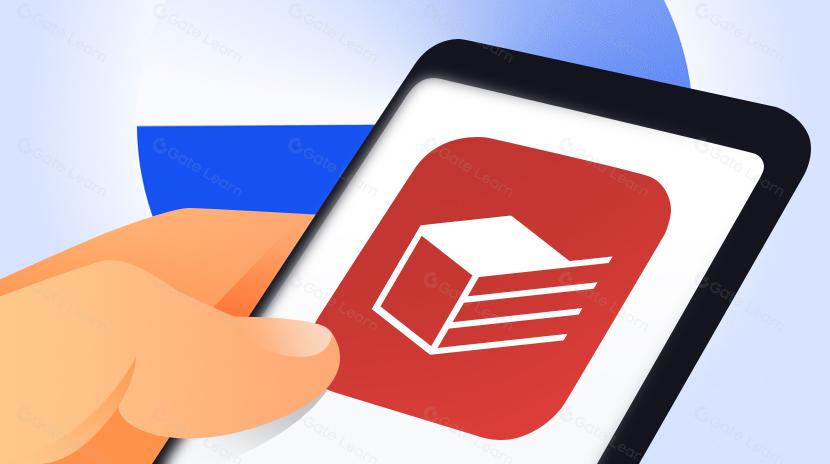
ما هو Tronscan وكيف يمكنك استخدامه في عام 2025؟
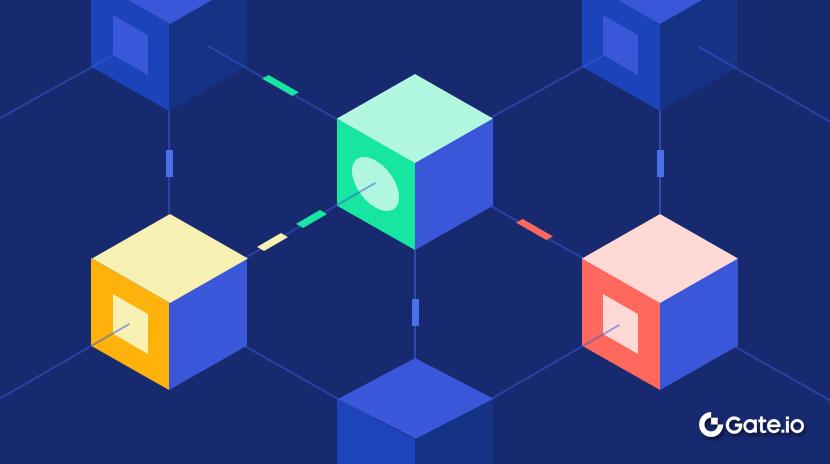
كل ما تريد معرفته عن Blockchain

ما هي كوساما؟ كل ما تريد معرفته عن KSM
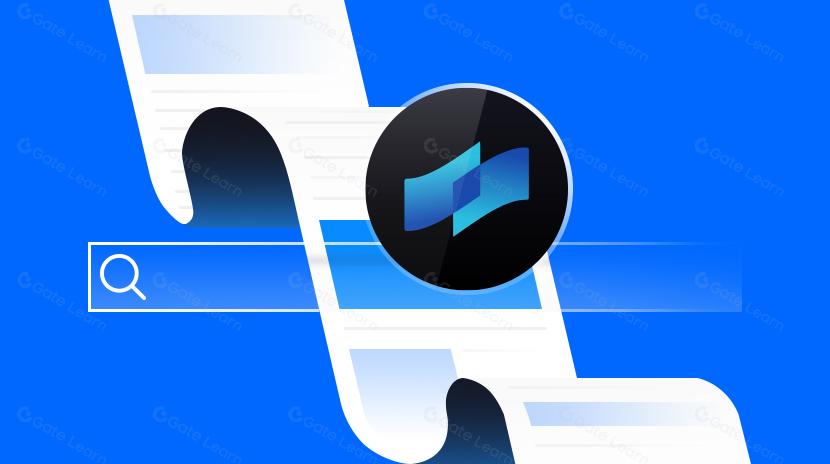
ما هو كوتي؟ كل ما تحتاج إلى معرفته عن COTI
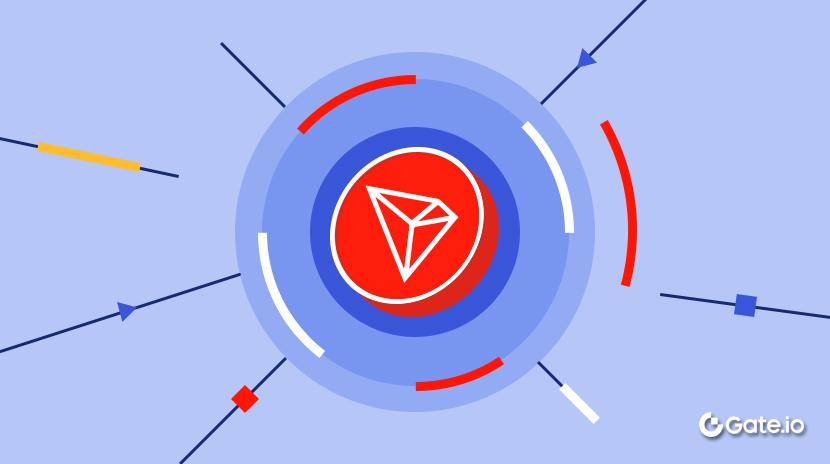
ما هي ترون؟
